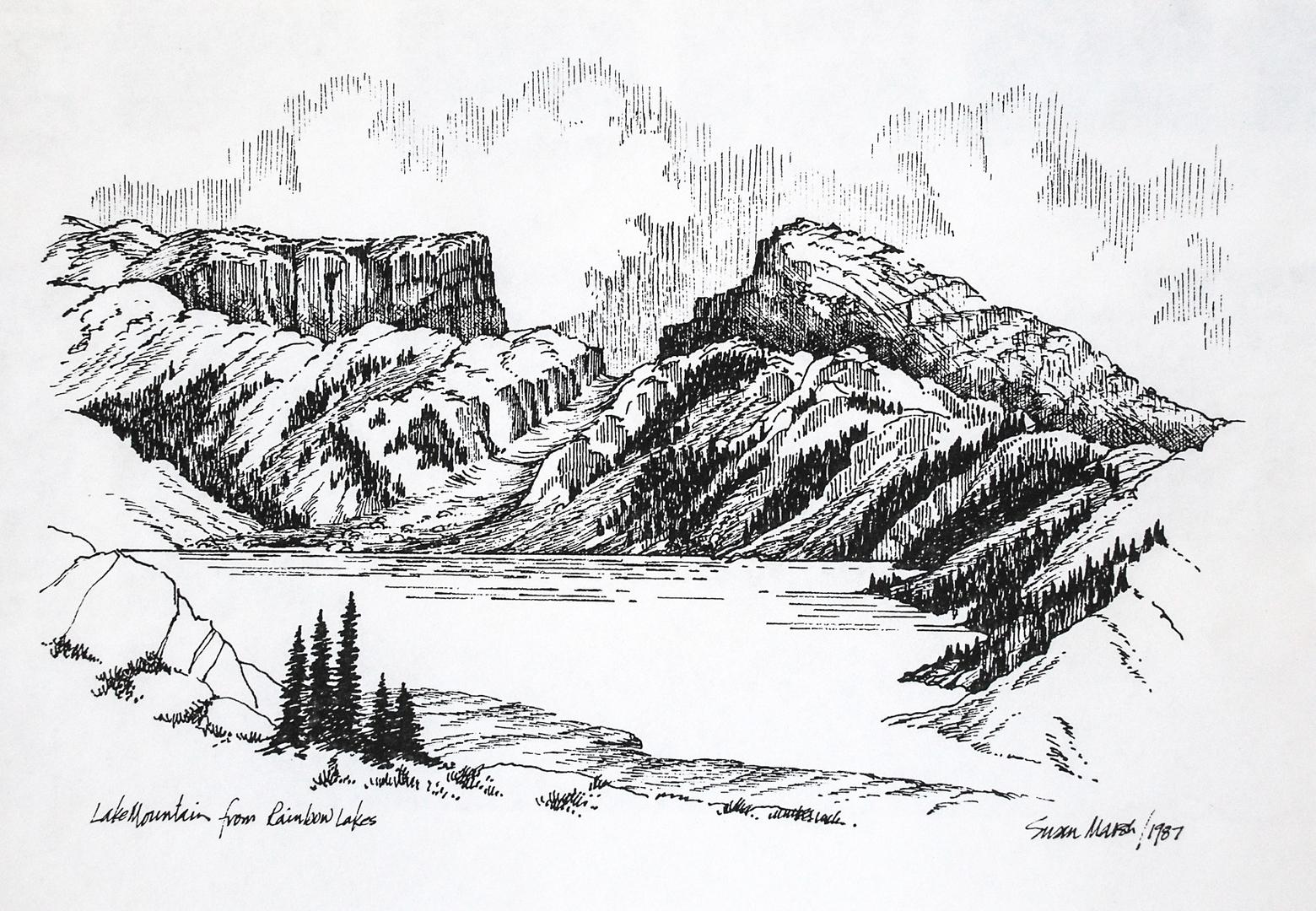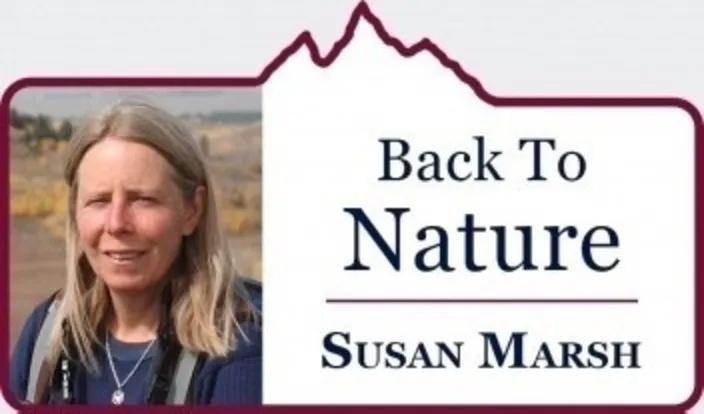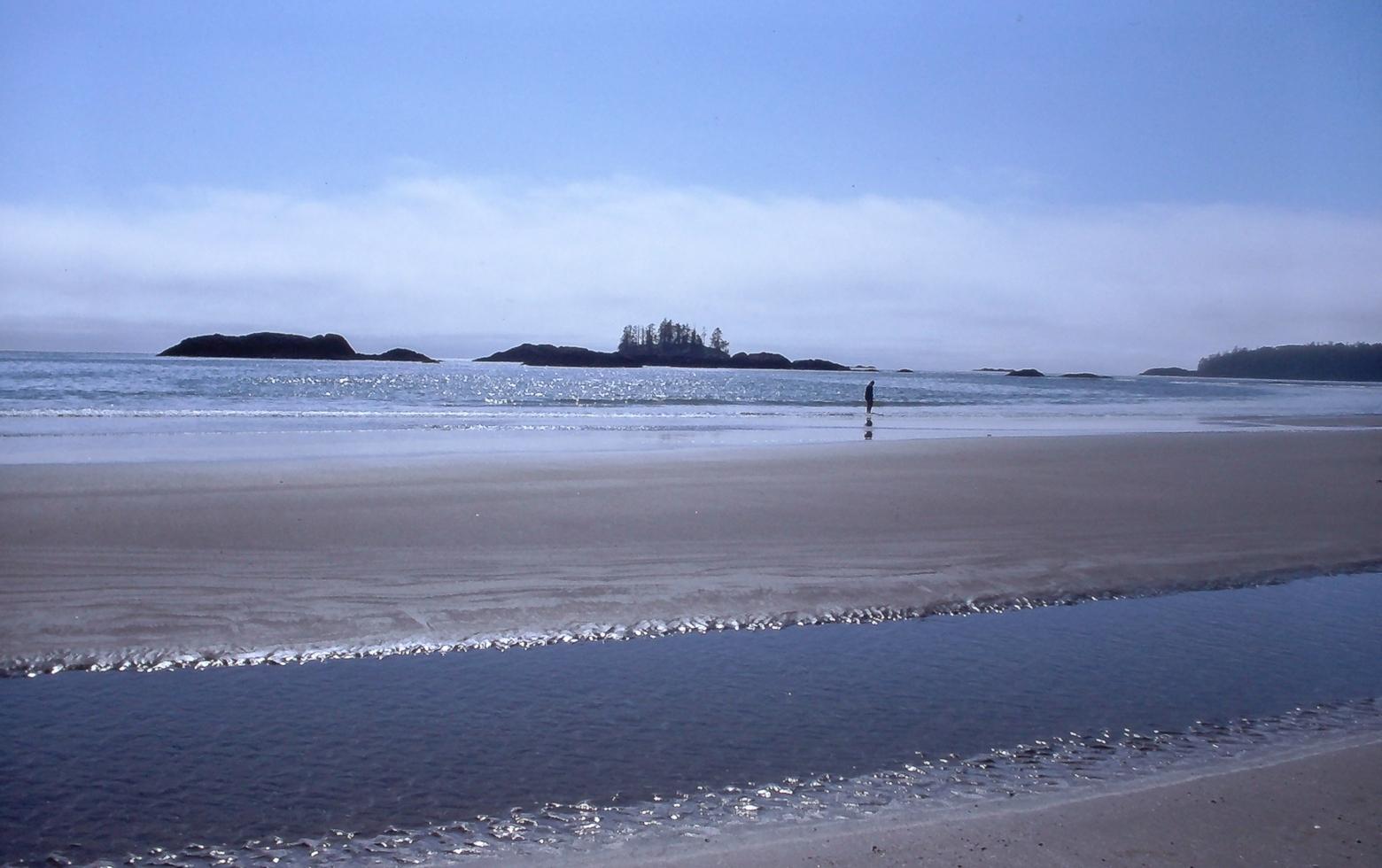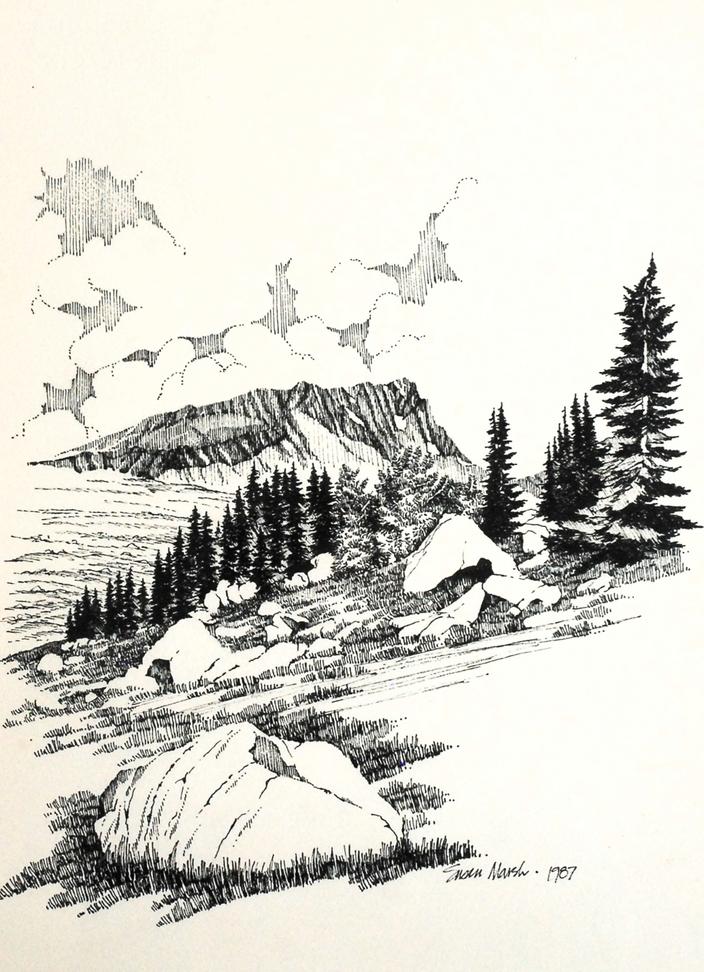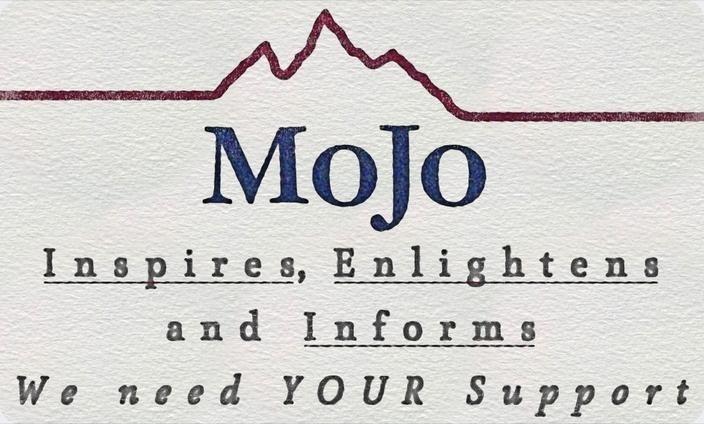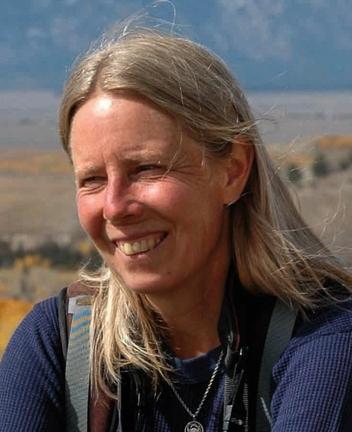Back to StoriesWe Are All Connected
March 29, 2024
We Are All ConnectedFinding unity, elegance and bliss in the wild
by Susan Marsh
To connect—whether with
people, wild nature, or a work of art—invites an opening into bliss. Bliss: it’s
a word I don’t often use to describe my state of mind. Delight, enjoyment,
contentment, yes. Often. But like awe, bliss arrives rarely, unbidden and
unexpected. Joy bubbles up from inside as a reaction to a pleasant experience,
but bliss feels as if it comes from far beyond the self.
As suddenly as bliss fills
me, it begins to fade, leaving an enduring palimpsest underlying the hours and
days and years that follow. Moments of bliss live in memory as times when my solitary
self became deeply connected to the greater whole.
Very few occasions are so
memorable. One of them happened while I was on a backpacking trip in the mid-1980s.
After organizing camp and cleaning dinner dishes, I wandered out beyond the
shelter of stunted firs near an alpine lake. In the cirque basin, outcrops of
glacier-polished granite intertwined with low willows and mountain heather. A deep,
narrow creek meandered around black-moss boulders, already settled into evening
shadow, while the upstream lake and high peaks surrounding it were lit with
gold from the late-day sun.
All at once, bliss poured
into me. I forgot myself, one lone human figure stepping across granite slabs. I
merged with the rocks and each low rattle of creek water, each bit of sun gleaming
against the side of a cliff, each thick-leafed twig of mountain heather. Together
we were gathered into the warm woven threads of the all.
I struggle to put this sense
of connection and completeness into words that come close to suggesting how it
felt. It’s easier, I believe, to say what an experience of bliss is not. It’s not
exuberant joy, the way I feel skiing deep powder on a cold sunny day, or
reaching a summit from which miles of mountains spread in all directions. It
isn’t wonder, which I feel under a sky full of stars or watching a moth emerge
from a cocoon.
I might describe bliss,
perhaps counterintuitively, as a dampening of self-awareness and cognition. My
awareness expands to encompass what surrounds me in a way that leaves behind
mere thoughts, words and explanations.
Moments of bliss live in memory as times when my solitary self became deeply connected to the greater whole.
This feeling might be similar
to what saints and mystics describe in their writings, a sense of being one
with God. It might be a slight suspension of my physical and temporal
existence, one of those cracks that let the light in. All I can do in words is
describe the feeling with metaphor, for the gift of bliss is ineffable.
I contrast the bliss I felt on
one summer evening in the high Absarokas to a walk along the ocean shore on a winter
night. I followed the narrow and changing strip of not-quite land and not-quite
sea, where the sand was wet and solid underfoot, where the sound of the waves seemed
to pound from all directions.
The experience was memorable,
but neither singular nor one of bliss. The ocean asked for an empty and contemplative
state, neither sad nor joyful. It asked for the kind of attention that is best
given in solitude, in winter, at night. I felt more like a witness to the power
and immensity of the sea than an integrated part of it. I am a land mammal,
after all.
Beyond a fundamental
connection with wild nature, among our deepest is with music. First you hear
it, then you become conscious of the sounds. It might draw you in. You stop,
listen. If you love what you’re hearing, you invite it in. Perhaps it’s a piece
you recognize, remembered from youth or last summer’s concert. You find
yourself humming while doing the dishes. You coexist with the music, deepening
your connection.
I suppose our greatest
connection to music comes by playing it. You are creating the thing you love. A
rare few are able to compose, much to the delight of the rest of us.
This can happen with any
kind of art, but music is an art form that lives in the air we breathe. It is
perhaps the oldest of the arts, predating humanity as birdsong, thunder, the
sound of moving water.
I might describe bliss, perhaps counterintuitively, as a dampening of self-awareness and cognition. My awareness expands to encompass what surrounds me in a way that leaves behind mere thoughts, words and explanations.
Some art can be enjoyed in
solitude, but music—and its close cousin, dance—creates an atmosphere of
community. Music exists in all cultures, an innate part of being human. Rhythm,
percussion, heartbeat, earth beat, bringing in all to become one under the same
tempo.
I’ve been playing piano
lately after decades away from a keyboard. I find, to my disappointment, that I
have as much trouble reading the notes for both hands simultaneously as I did
when I was taking lessons as a child. But I find to my pleasure that I can still
pick out a tune without reading the music sheet at all.
I think this means that
music inhabits me. My brain forgets, my fingers remember, and my ear tells me
how I’m doing. It’s physical instead of thoughtful, like the bliss I find in
the mountains.
One reason music strikes me as different
from other art is its airborne physicality. Paint, clay and charcoal are
physical as well, being made of earth and its products. But they seem to remain
inert—a damp lump, a cracked scrape of dry pigment, a charred stick—until I
pick them up to make something. Musical notes seem to come alive from out of
nothing when a vibration begins, formed by sound waves with specific
frequencies traveling through invisible air.
It’s like magic, but science tells us
it’s real. The wave lengths, amplitudes and frequencies of all kinds of
radiation, light and sound are phenomena of nature; how the universe works.
Just how the universe works can be partially
described in the language of mathematics. If dance is music’s cousin, math is
music’s twin. I recently finished reading, or rather meditating upon, Alec
Wilkinson’s A Divine Language, in
which he describes mathematics as something humans discovered, rather than
invented. He suggests that math is evidence for a universal intelligence.
This idea put a puzzle piece into
place for me.
As a child, I spent the majority of my
free time in the woods adjacent to my parents’ house, accompanied by the trees
I climbed and talked to, the native blackberry vines that bore the most
delicious fruit, and the birds and small animals that still lived in that 10-acre
woodlot surrounded by a growing suburb. The red ants, upon whose nest I sat as
a poorly considered experiment at age 4 or 5, accompanied me home one day as
well. There was also a presence I felt in
those woods—gauzy and nebulous, without a name.
Wilkinson writes that he felt
something with and beyond him as a child, an undefined presence. Perhaps
children are better tuned into such things than distracted and busy adults, but
I could strongly relate to his experience, even now. It is the source of bliss. My nameless sense of something beyond
me now seems to have a stronger foundation. A foundation made of concrete. Or
maybe mathematics.
The child I was had a rudimentary sense
of the unity, symmetry and elegance of all things. I took that sense into
adulthood, and decades later I am somewhat better at articulating it. It is a
comfort to feel that I, and each of us, can be part of the unbreakable connections
in the universe.
________________________________________________________________________________________________________________________
Mountain Journal is the only nonprofit, public-interest journalism organization of its kind dedicated to covering the wildlife and wild lands of Greater Yellowstone. We take pride in our work, yet to keep bold, independent journalism free, we need your support. Please donate here. Thank you.
Related Stories
January 31, 2024
Forests of Immortal Stories
In her latest essay, MoJo columnist Susan Marsh writes how ancient trees draw human love in Greater Yellowstone and across the globe....
November 3, 2023
To Protect a Section of Precious Land
Why would Wyoming put a
wildlife-rich 640-acre land parcel up for auction? Hint: Big money.
May 8, 2024
The Healing Nature of Nature Therapy
In a world
stuffed with technology and distraction, Bradley Orsted reaches out to touch
the natural world in Greater Yellowstone.

